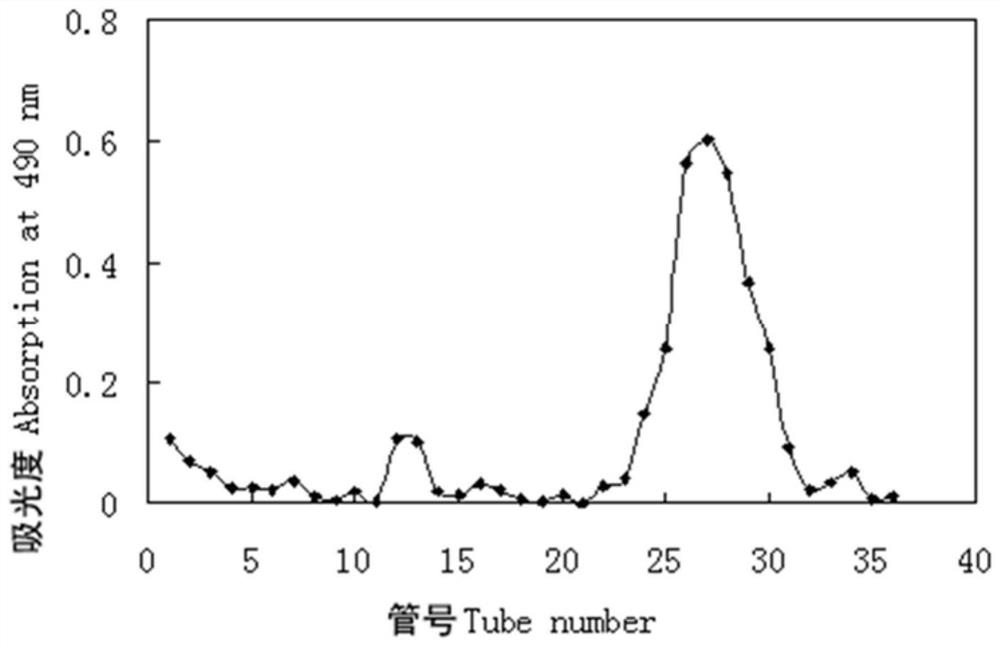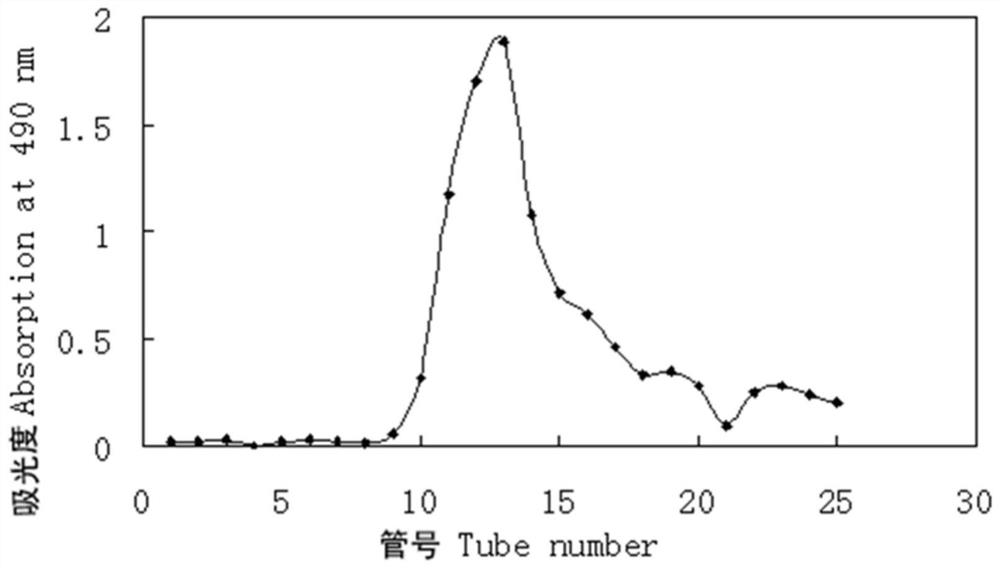Purification method of chlorella polysaccharide with anti-hepatoma cell proliferation activity
A technology of proliferation activity and purification method, which is applied in the field of purification of chlorella polysaccharides, and can solve the problems that active components need to be further separated
- Summary
- Abstract
- Description
- Claims
- Application Information
AI Technical Summary
Problems solved by technology
Method used
Image
Examples
Embodiment
[0052] 1. Preparation of Chlorella Polysaccharides
[0053] 1.1 Cultivation of Autotrophic Chlorella
[0054] The autotrophic Chlorella population was obtained from the Liaoning Academy of Marine and Fishery Sciences. The stock was transferred to 10 L of thrice boiled seawater and grown in F / 2 Mediam (12 hr dark: 12 hr light cycle).
[0055] Autotrophic Chlorella growth conditions: F / 2 (Guillard.1962) modified formula (sea water)
[0056]
[0057]
[0058] The growth cycle of autotrophic Chlorella: Lag period: 0-2d; Growth period: 2-8d; Death period: 8-11d.
[0059] Dry matter components in autotrophic Chlorella: protein: 55-67%; crude fiber: 1-4%; lipid: 8-13%; ash: 5-8%; sugar: 10-20%; moisture 3 to 5%.
[0060] Chlorella polysaccharide components: Chlorella polysaccharides contain the following known sugar groups and active monosaccharides. The molar ratio of known sugar groups is as follows: D-fucose: D-rhamnose: D-2-glucosamine: D-galactose: D-glucose=1.3:1.0:1...
PUM
 Login to View More
Login to View More Abstract
Description
Claims
Application Information
 Login to View More
Login to View More - R&D
- Intellectual Property
- Life Sciences
- Materials
- Tech Scout
- Unparalleled Data Quality
- Higher Quality Content
- 60% Fewer Hallucinations
Browse by: Latest US Patents, China's latest patents, Technical Efficacy Thesaurus, Application Domain, Technology Topic, Popular Technical Reports.
© 2025 PatSnap. All rights reserved.Legal|Privacy policy|Modern Slavery Act Transparency Statement|Sitemap|About US| Contact US: help@patsnap.com



